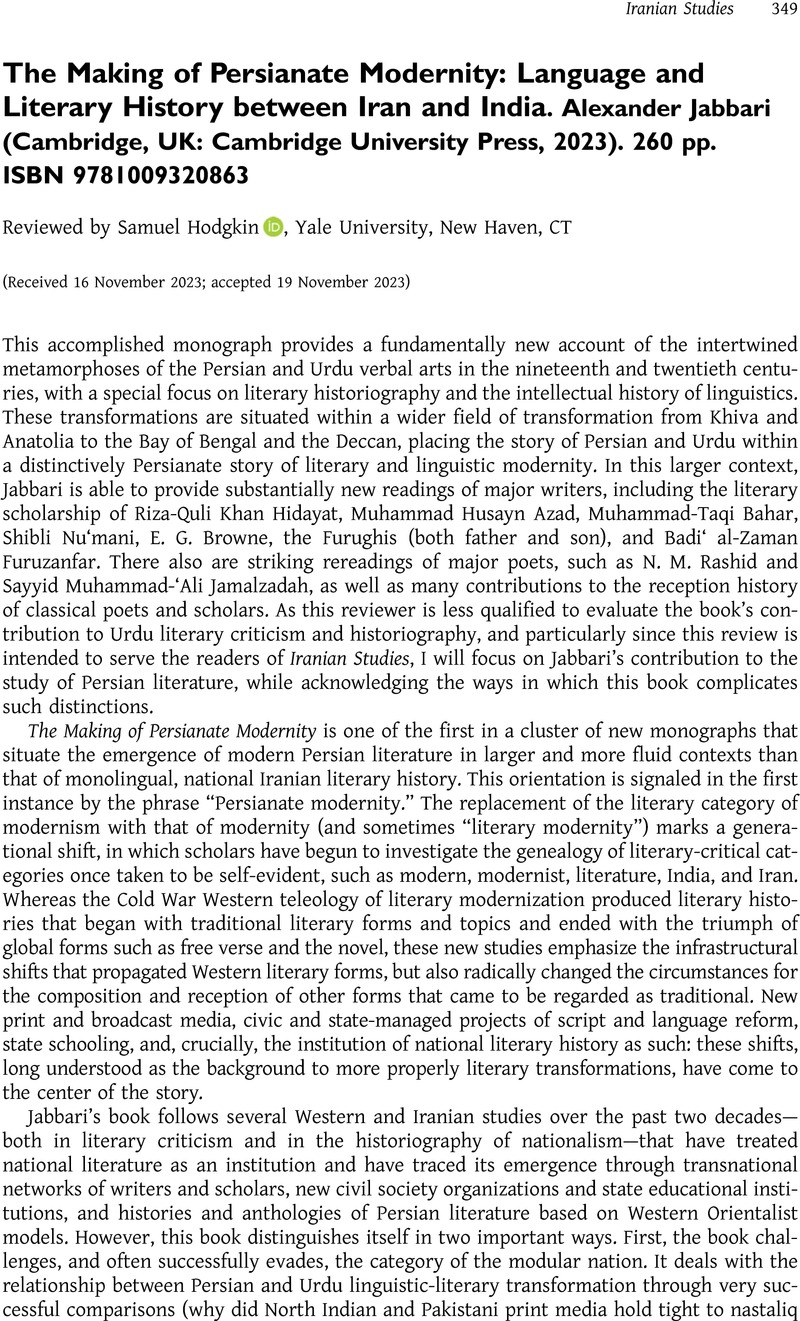No CrossRef data available.
Article contents
The Making of Persianate Modernity: Language and Literary History between Iran and India. Alexander Jabbari (Cambridge, UK: Cambridge University Press, 2023). 260 pp. ISBN 9781009320863
Review products
The Making of Persianate Modernity: Language and Literary History between Iran and India. Alexander Jabbari (Cambridge, UK: Cambridge University Press, 2023). 260 pp. ISBN 9781009320863
Published online by Cambridge University Press: 18 December 2023
Abstract
An abstract is not available for this content so a preview has been provided. Please use the Get access link above for information on how to access this content.

- Type
- Review
- Information
- Copyright
- Copyright © The Author(s), 2023. Published by Cambridge University Press on behalf of the Association for Iranian Studies



